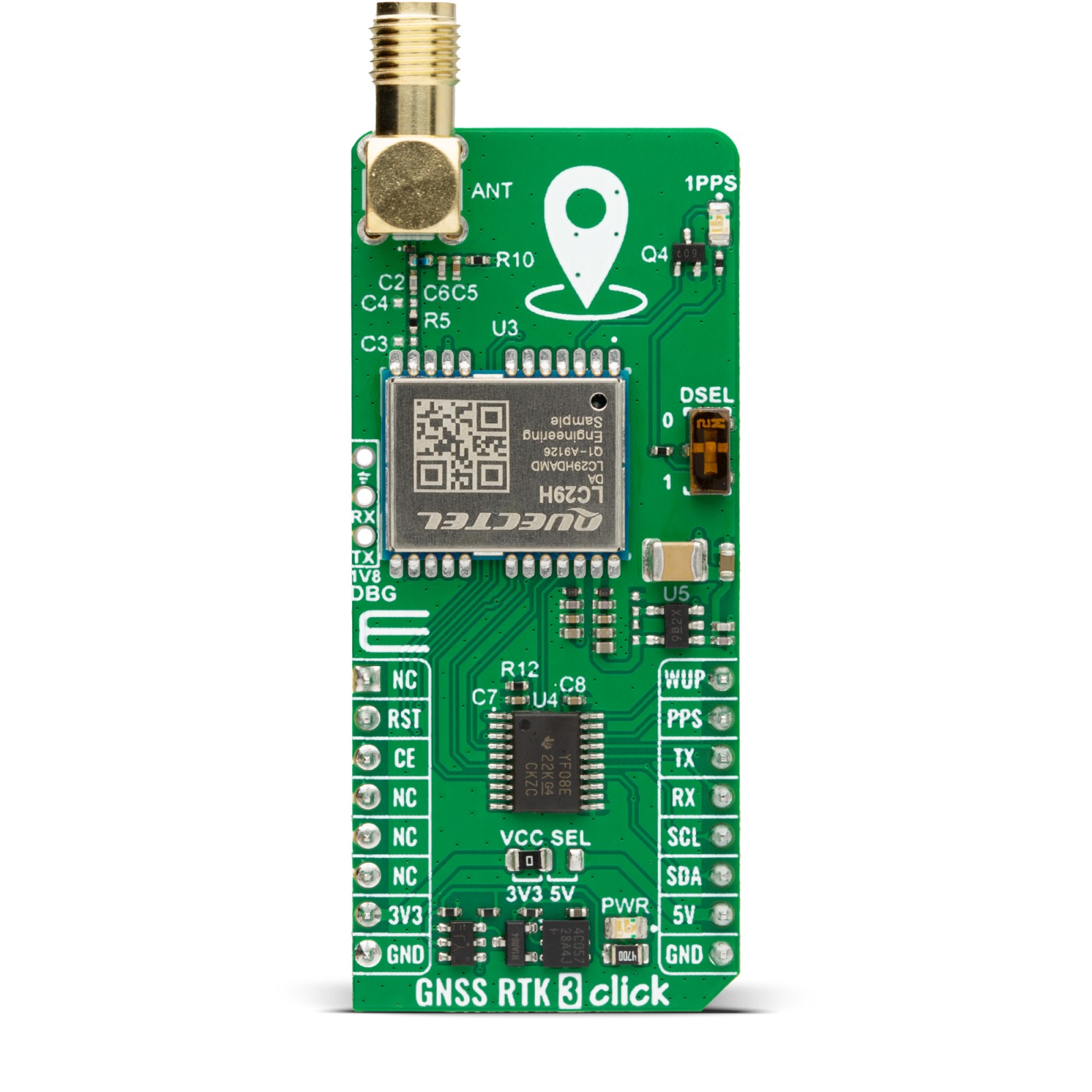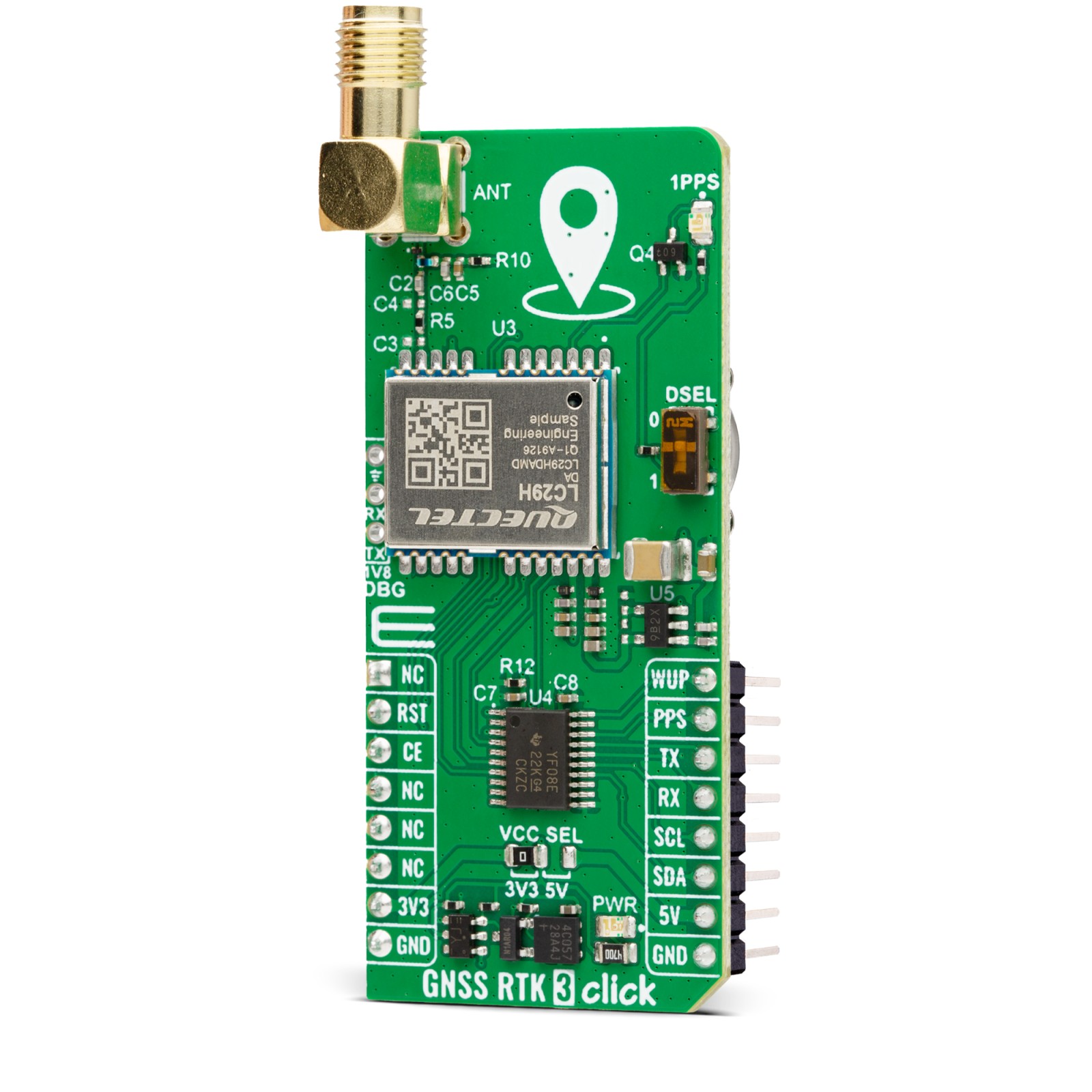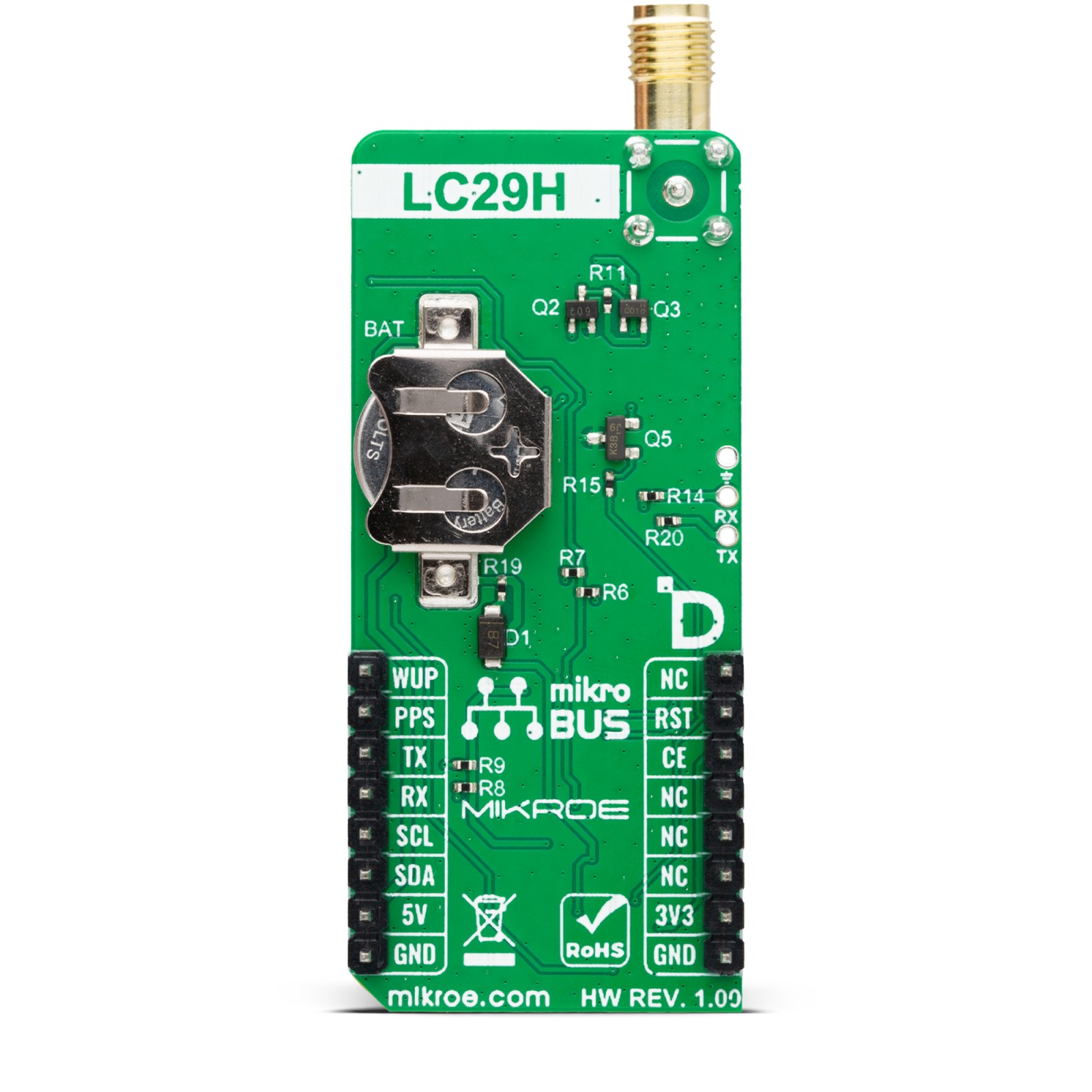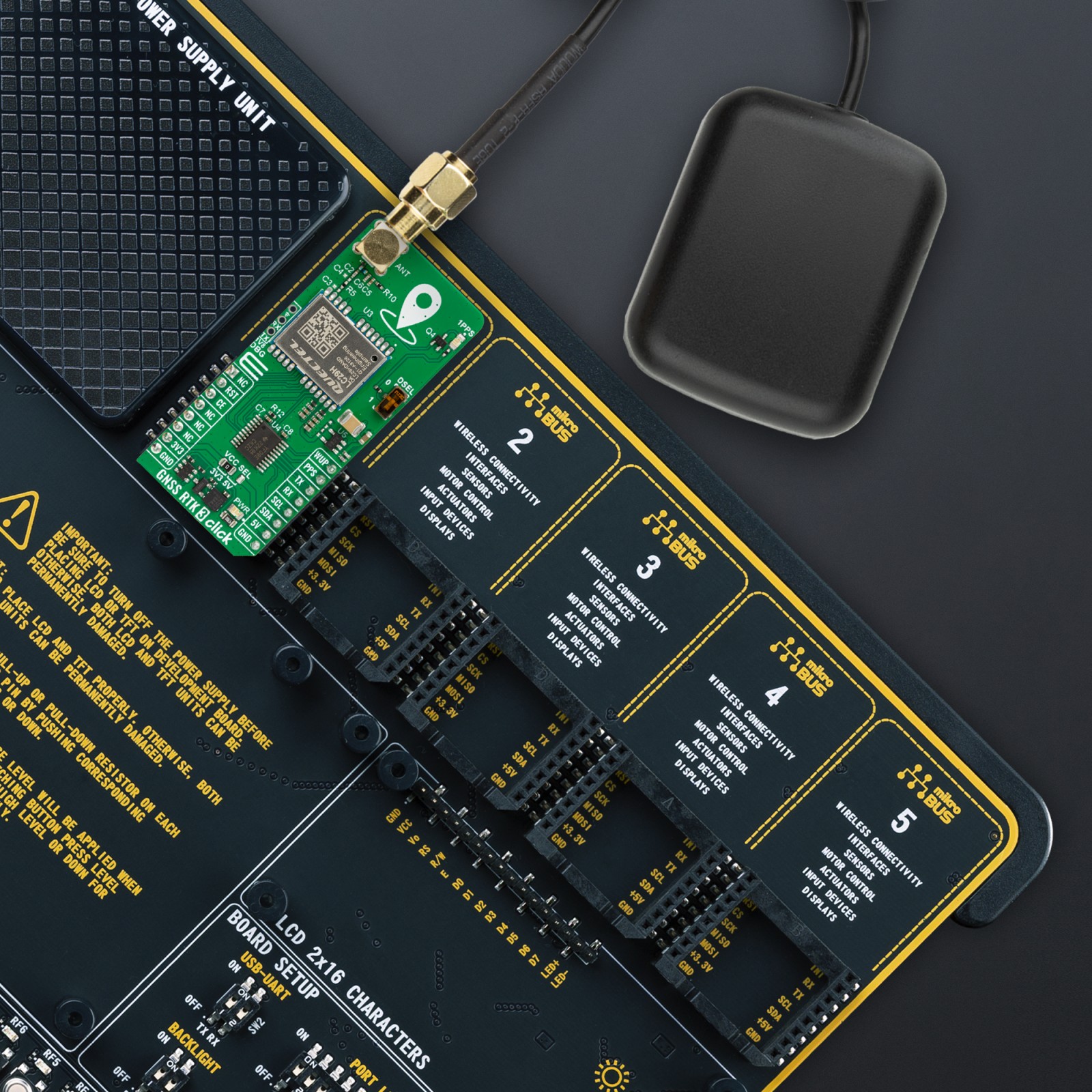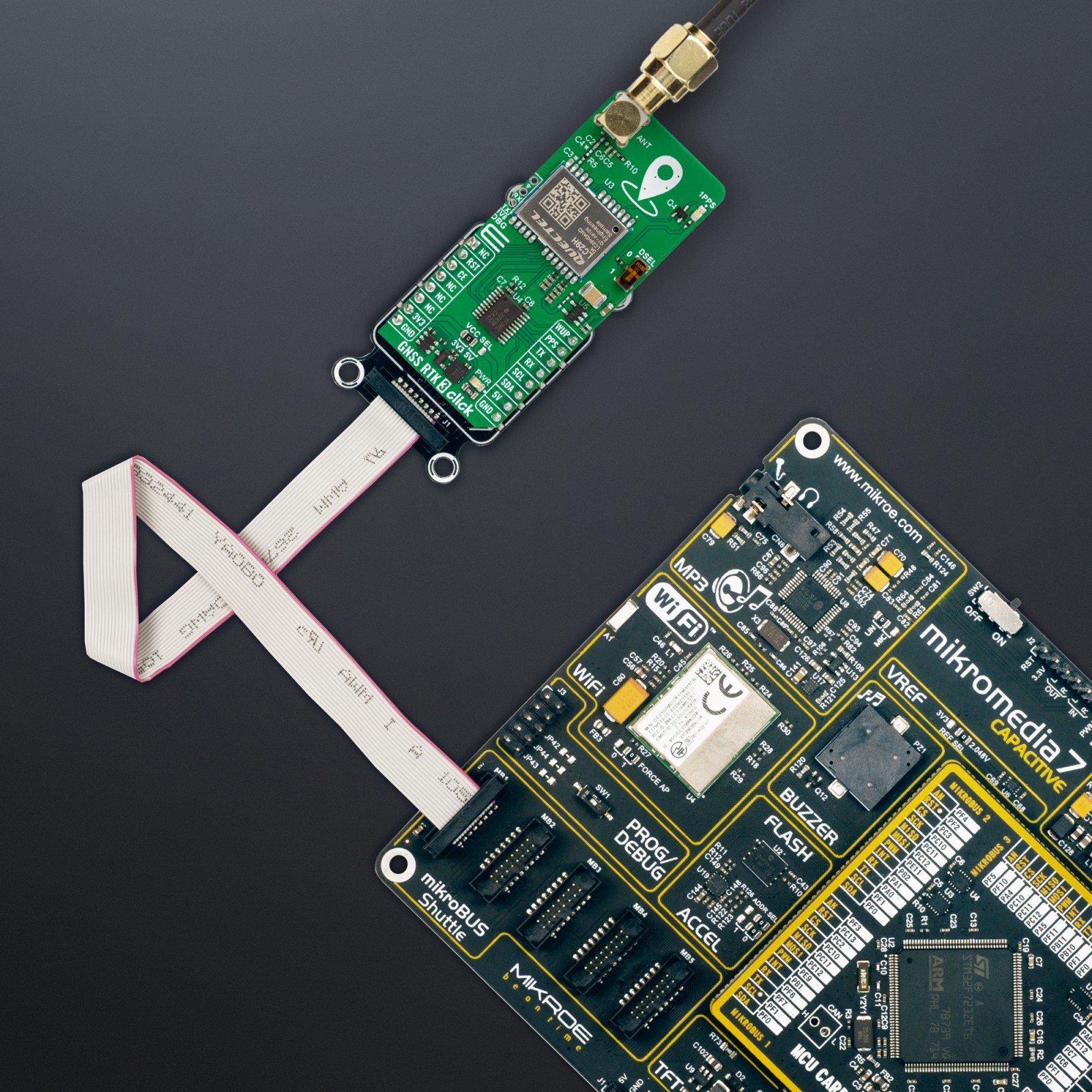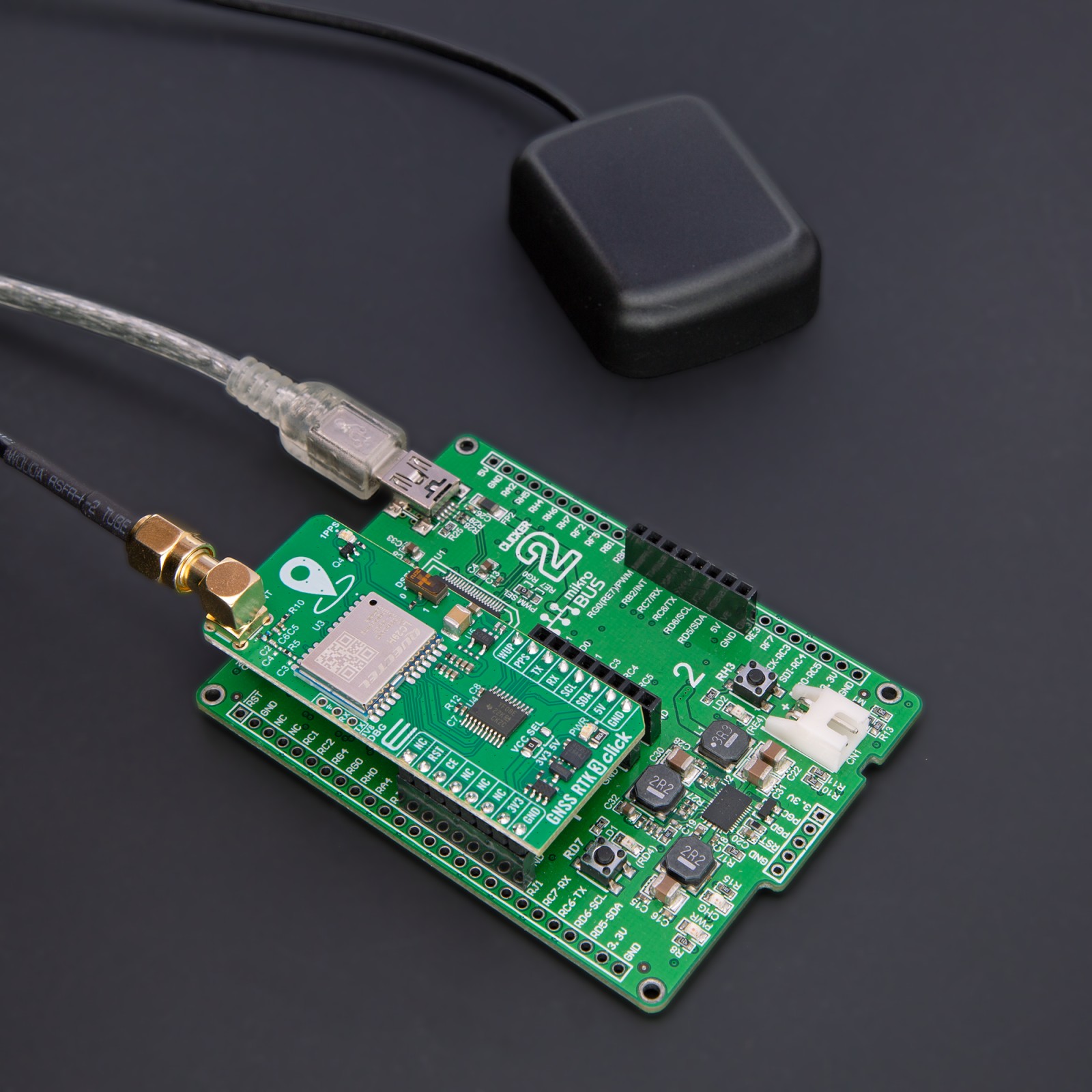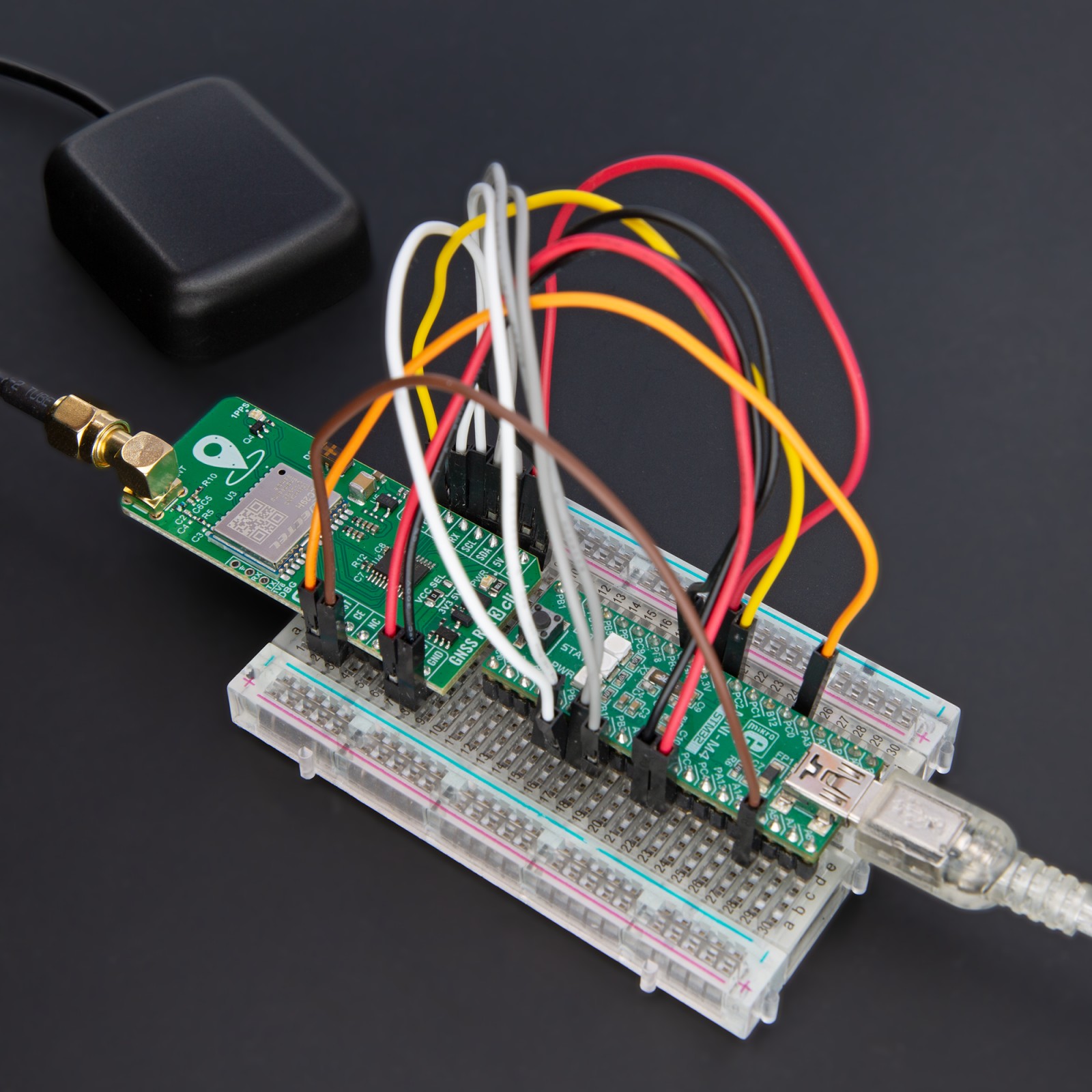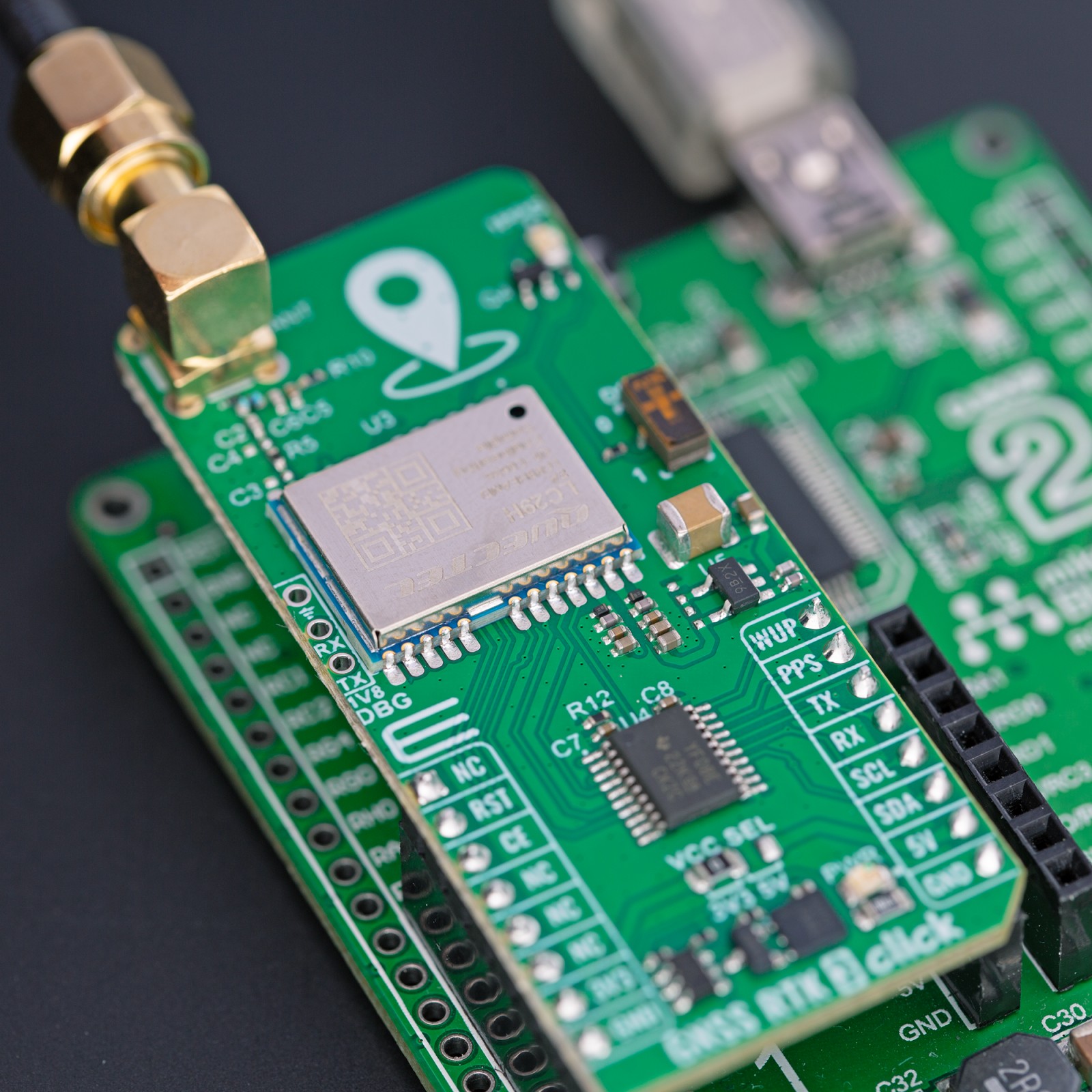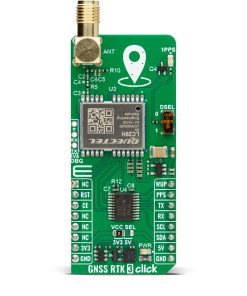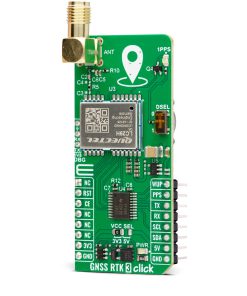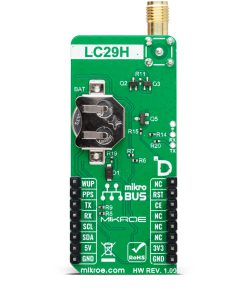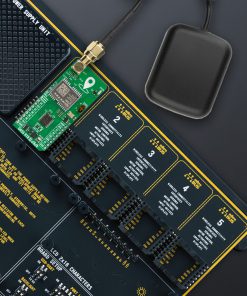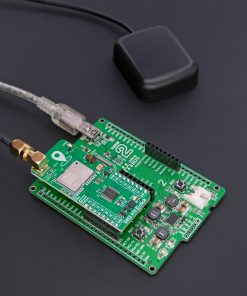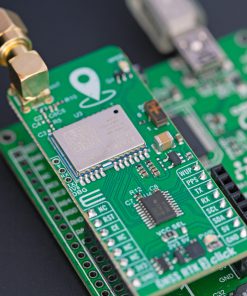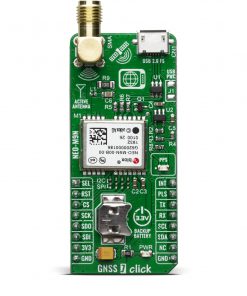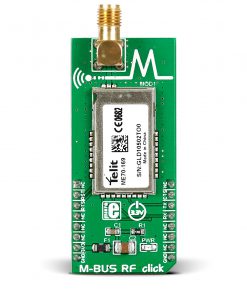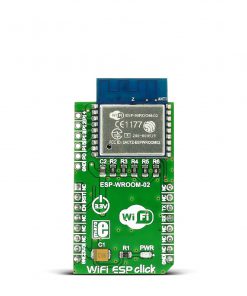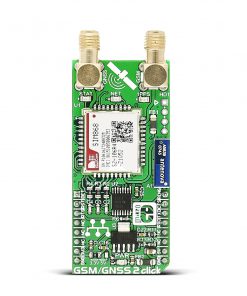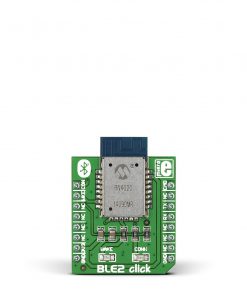GNSS RTK 3 Click – LC29HDA
R1,800.00 ex. VAT
GNSS RTK 3 Click is a compact add-on board that enhances the precision of position data derived from satellite-based positioning systems. This board features the LC29HDA, a dual-band, multi-castellation GNSS module from Quectel. This module supports the concurrent reception of all five global GNSS constellations: GPS, BDS, Galileo, GZSS, and GLONASS. It can receive and track many visible satellites in multi-bands, significantly mitigating the multipath effect in deep urban canyons and improving positioning accuracy. This Click board™ makes the perfect solution for the development of high-precision positioning for demanding industrial applications like machine control, ground robotic vehicles, and unmanned aerial vehicles (UAV).
GNSS RTK 3 Click is fully compatible with the mikroBUS™ socket and can be used on any host system supporting the mikroBUS™ standard. It comes with the mikroSDK open-source libraries, offering unparalleled flexibility for evaluation and customization. What sets this Click board™ apart is the groundbreaking ClickID feature, enabling your host system to seamlessly and automatically detect and identify this add-on board.
NOTE: This Click board™ is compatible with Skylark® Precise Positioning Service, enabling high-precision GNSS applications. For detailed, step-by-step instructions on setting up Skylark® Precise Positioning Service, please refer to the Quick User Guide.
Stock: Lead-time applicable.
| 5+ | R1,710.00 |
| 10+ | R1,620.00 |
| 15+ | R1,530.00 |
| 20+ | R1,472.40 |

